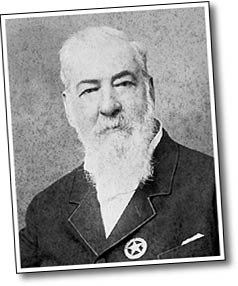Ingredients and operation
Hair sprays consist of the following components: concentrate, plasticizers, luster agents, and fragrances, as well as propellants.
Concentrate
Hair spray are a blend of polymers that provide structural support to hair. These frequently include copolymers of polyvinylpyrrolidone (PVP) and polyvinyl acetate (PVAc). Vinyl acetate-crotonic acid copolymers give harder films. In this way hairsprays can be formulated as flexible, medium, and maximum hold. The copolymer mixture is usually adjusted to achieve the desired physical properties (adhesive strength, foaming, etc.), using plasticizers such as aminomethyl propanol, surfactants such as benzalkonium chloride, and other agents like dimethicone.
Propellants
Since the phase-out of CFCs in the 1980s, hydrocarbons are popular propellants. These include propane, butane, isobutane, and related volatile hydrocarbons, as well as other mixtures. Such hydrocarbons are poor solvents for the active ingredients such as the polymers. For this reason dimethyl ether is often added as well. It functions both as a propellant and a solvent.
Other components
Plasticizers used in hair spray include esters of citric acid and adipic acid. Silicones and polyglycols are also used.
The concentrate comprises only a small volume of a can of hairspray. Most of a canister is filled solvents such as isopropanol (rubbing alcohol) and ethanol.
History
Early hair sprays were developed in Europe in the 1920s. In the US, hair sprays were developed around the time of the aerosol can in the 1940s, and the first patents describing copolymers for hair styling were published in the 1940s.
In the US, the first to package it was Chase products (an aerosol manufacturer) in 1948, as the beauty industry saw that the aerosol cans used in World War II for insecticides could be used as a dispenser for hairspray. It thrived and became increasingly popular and mass-produced, as updos and other such hairstyles were created. By 1964, it became the highest selling beauty product on the market.
In 1968 at the feminist Miss America protest, protestors symbolically threw a number of feminine products into a "Freedom Trash Can." These included hairspray, which was among items the protestors called "instruments of female torture" and accoutrements of what they perceived to be enforced femininity.
Sales of hairspray declined in the 1970s as hairstyles became predominantly worn straight and loose. By the 1980s, hairspray’s popularity came back as big hairstyles resurged with the glam metal scene.
Prior to 1979, the most popular propellants in hairsprays were CFCs. Owing to environmental concerns, they were replaced.
Hair spray can be used for things other than hair. For example in the beauty world one might spray some hairspray on the leg and on the inside of the dress so that the dress won't ride up and stay in place.
- 2 (8-ounce) cans refrigerated crescent dinner rolls
- 1 cup sliced roasted red bell peppers, drained well
- 8 slices provolone cheese, cut in half
- 16 thin slices deli Genoa salami
- 10 thin slices deli ham
- 1 teaspoon Italian seasoning
- 1/2 cup banana pepper rings, drained well
- 1/4 cup Italian dressing
- Preheat oven to 350º. Coat a 12-inch pizza pan with cooking spray.
- Unroll crescent rolls. Place wide end of triangles in middle of pan, forming a ring, overlapping dough as necessary.
- Place bell peppers on widest part of dough. Layer with half the cheese, salami, and ham. Sprinkle with Italian seasoning and evenly place banana pepper rings. Drizzle half the Italian dressing over the banana peppers. Layer with remaining cheese, salami, and ham. Drizzle remaining dressing over meats. Bring narrow ends of triangles over meat, tucking ends under.
- Bake 25 to 30 minutes, or until dough is cooked and golden brown. Let cool 5 minutes, then slice and serve.
Each year on April 17th, National Ellis Island Family History Day encourages families to explore their ancestry and discover family who immigrated through Ellis Island.
From 1892 to 1924, Ellis Island served as the busiest inspection station for millions of immigrants to the United States. On this day in 1907, officials recorded 11,747 names passing through Ellis Island. It was the busiest day of immigration in the station’s history. During all of 1907, officials processed over one million immigrants through Ellis Island.
During its operation, approximately 12 million immigrants passed through the halls of Ellis Island. It operated from 1892 to 1954. Before Ellis Island, immigrants entered the United States in New York City at Castle Garden. Just months before Ellis Island’s opening, the old depot was demolished and ushered in a new era of immigration. The Statue of Liberty overlooks Ellis Island and was one of the first sights the nearly 2,000 immigrants a day would see as they disembarked.
The new facilities offered an improvement over the Castle Garden. The large, open, and airy facility presented an overwhelming obstacle to some, though. Thousands of people from many cultures and speaking different languages gathered in one place. After such a long journey, the arrival at Ellis Island must have been stressful and confusing. What an overwhelming and exciting experience for them all! For some, they entered Ellis Island as a step toward their future. Officials turned others away for a variety of reasons.
HOW TO OBSERVE
Do you have a family member who immigrated through Ellis Island? Explore your ancestry and follow your ancestors’ footsteps. Discover the history behind your family’s name or learn about their experiences as they traveled to a new land. Many documents reveal glimpses into their lives and their reasons for immigrating.
Through its website, ellisisland.org, you explore the histories of famous immigrants. You can also search passenger lists and follow the clues to your family’s past. While you research, take a virtual tour or learn genealogy basics. Learn about these 7 Notable Ellis Island Immigrants and as you celebrate your day, be sure to share your experience, too.
NATIONAL ELLIS ISLAND FAMILY HISTORY DAY HISTORY
On April 17, 2001, National Ellis Island Family History Day commemorated the busiest inspection station in the United States by launching digital access to its records. This project placed Ellis Island documents at the descendants’ fingertips for the first time. Millions of families could finally retrace their ancestors’ footsteps in a way they had never been able to do before. Governors across the United States officially declared the observance to be celebrated on April 17th, annually.















No comments:
Post a Comment